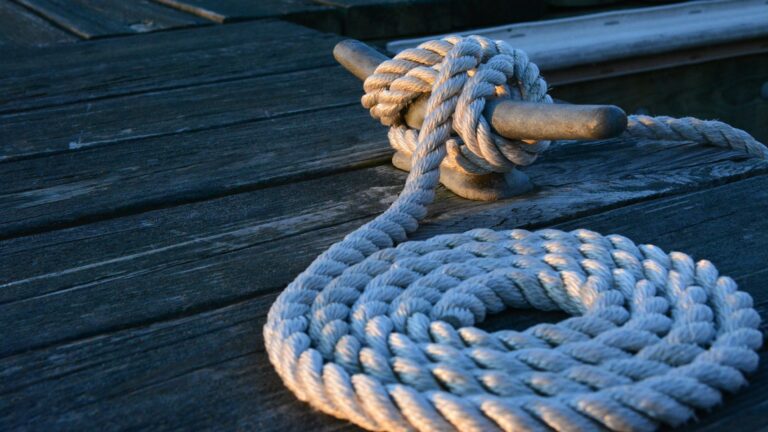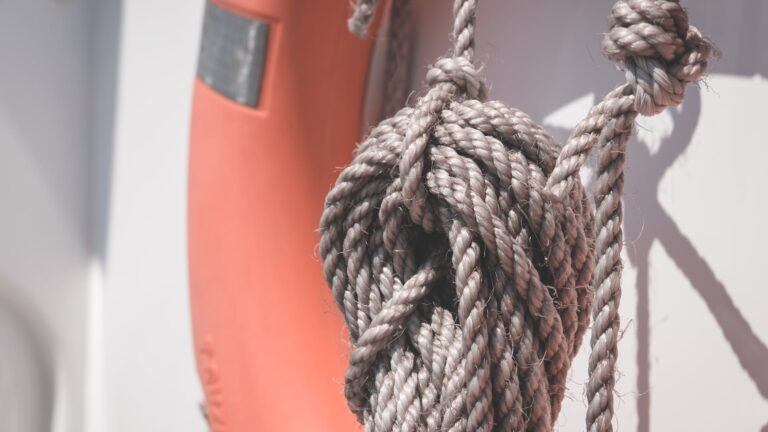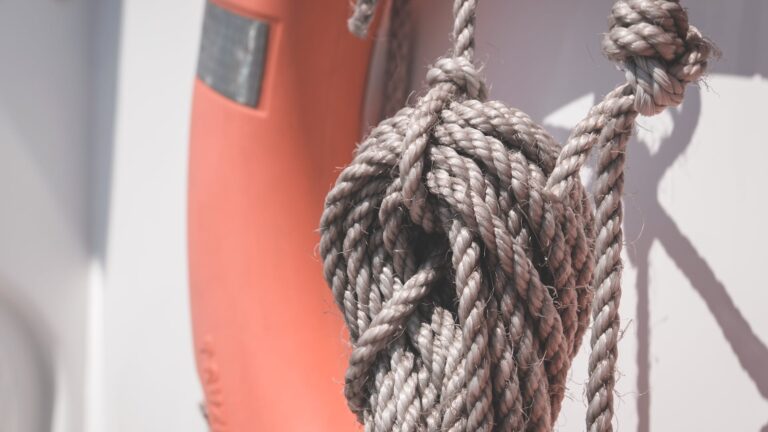How Many Knots Is Too Windy For Sailing?
Sailing is a thrilling and rewarding experience, but it can also be dangerous if you don’t know your limits or the limits of your boat. Knowing how many knots is too windy for sailing is an important part of being a responsible sailor and ensuring your safety on the water.
Definition of Knots
Knots are a unit of speed measurement used by sailors and meteorologists to measure the strength and direction of a wind or current in nautical miles per hour (kts).
A knot is equal to one nautical mile per hour, which is approximately 1.15 miles per hour or 1.85 kilometers per hour. Wind speeds can range from zero (calm) up to hurricane force, which can exceed 120 knots (138 mph).
What Is Considered Too Windy for Sailing?
Anything above 20 knots can be considered too windy for sailing, especially if it’s gusty and the area has a tendency to get even higher winds more frequently than usual.
For sailors with more experience, they may attempt to sail in up to 25 knots with gusts reaching 30-32 knots – however, this should only be done with extreme caution and an understanding of the risks involved in these conditions.
The most important thing to remember when deciding when to go out sailing is that each situation will be different depending on the type of boat, the sailor’s experience level, weather patterns, etc., so it’s best to use your best judgement at all times when making these decisions.
Factors to Consider When Deciding When To Sail
When deciding whether or not it’s safe enough for you to go out sailing in higher winds, there are several factors that you should consider:
- The type of boat: Different boats are designed differently and some have features that may make them better suited for higher wind conditions than others. Make sure you understand the capabilities and limitations of your boat before heading out into stronger winds.
- The sailor’s experience level: It goes without saying that an experienced sailor will have more knowledge about what conditions their boat can handle compared with someone who is new to sailing or who does not have much experience in high-wind situations. It’s always best to err on the side of caution when it comes to these decisions as even experienced sailors can find themselves in dangerous situations if they’re not careful enough when handling their boat in strong winds or choppy waters.
- Weather patterns: Pay close attention to weather patterns as they can often change quickly and unexpectedly, so making sure you’re constantly aware of what’s happening around you is essential for staying safe while sailing in high winds or choppy waters.
- Location: Where you choose to go sailing will also affect how much wind you might encounter while out on the water, so it’s important that you choose a spot where the conditions won’t be too extreme for your skill level or for your boat’s capabilities.
What Kind Of Boats Are Suitable For Sailing In High Winds?
Certain boats are better suited for sailing in high winds than others due to their design features such as keel depth, sail size, hull shape etc., so make sure you understand what type of vessel would work best depending on the conditions before heading out into stronger winds.
Generally speaking, boats with deeper keels and larger sails tend to handle better in stronger gusts as they provide more stability against them compared with shallower vessels which may struggle more against stronger gusts due to their lack of stability underneath them due instability caused by their shallow keels and smaller sails which do not provide as much resistance against gusts as larger ones would do..
How Do Experienced Sailors Handle Higher Winds?
Experienced sailors will usually prepare themselves both mentally and physically before venturing out into higher winds by doing things such as checking over their boat thoroughly prior departure (checking all lines/rigging/etc.), mentally preparing themselves by visualizing what they would do if something unexpected were happen while out on the water (e.g., how they would maneuver their boat should they encounter an unexpected strong gust), wearing appropriate clothing/footwear (non-slip shoes/waterproof clothing) etc., so that they’re ready both mentally and physically for any potential unexpected scenarios that could arise while out at sea..
Strategies For Staying Safe In Higher Winds
When sailing in higher winds it’s very important that you stay aware at all times by checking weather reports regularly and keeping an eye on any changes that may occur during your journey so that you can take any necessary action should unfavorable conditions arise while at sea.
Additionally, experienced sailors suggest having a plan B prepared should things take an unexpected turn while out on the water, such as having another vessel nearby that could come help if needed or having flares available should communication become difficult due bad weather conditions etc.
Other than this its recommended staying close shorelines where possible and keeping low sail area where possible as this will reduce any potential risks associated with heavier sails and larger rigs catching too much wind which could lead them becoming unstable quickly.
How To Handle Gusts And Choppy Waters
Gusts are sudden bursts of stronger wind strength than normal which require quick reflexes from any sailor who encounters them, thus its important having some strategies prepared beforehand such as reducing sail area quickly upon feeling strong gusts coming through or adjusting course slightly away from them if possible, all this needs doing quickly but calmly so its best being prepared mentally prior going out into potentially gustier waters.
Additionally choppy waters caused by these same gusts increase wave heights thus changing wave patterning significantly which can cause vessels become unstable very quickly, thus its highly recommended reducing speed significantly whilst navigating through these areas until wave heights reduce again allowing normal navigation continue safely..
What Other Weather Conditions Should Be Taken Into Account?
Apart from just wind strength other weather conditions should also taken into account when deciding whether its safe enough going out onto open waters, things such foggy visibility poor visibility due rain/mist/low clouds, extreme temperatures either hot cold etc., thunderstorms, dust storms, snow storms etc., all these additional factors need taking into account prior heading off thus being fully aware whats happening around us essential ensuring our safety open waters..
Advice On How To Prepare Before Heading Out In Strong Winds
Before heading onto open waters during high-wind periods its recommended preparing our vessel thoroughly prior departure making sure everything securely fastened down so nothing gets blown off during journey including hatches/doors kept securely shut, additionally wearing appropriate clothing/footwear essential whilst dealing with sudden changes temperature due different environments encountered along way plus non-slip shoes ideal preventing slipping decks during choppy seas, finally double-checking all safety gear hand making sure all lifejackets are easily accessible plus having flares ready case worst happens enabling quick response during emergencies whilst open seas.
Conclusion
Sailing is an amazing sport but it requires skill knowledge stay safe open seas thus knowing many knots too windy essential part responsible sailor, understanding type vessel suitable given conditions key ensuring safe journey plus factors consider when choosing go out also essential part decision-making process prior departure, finally preparing both physically mentally prior hitting open water essential ensuring preparedness unexpected scenarios occur throughout journey thus allowing enjoy thrilling rewarding experience without compromising safety.







